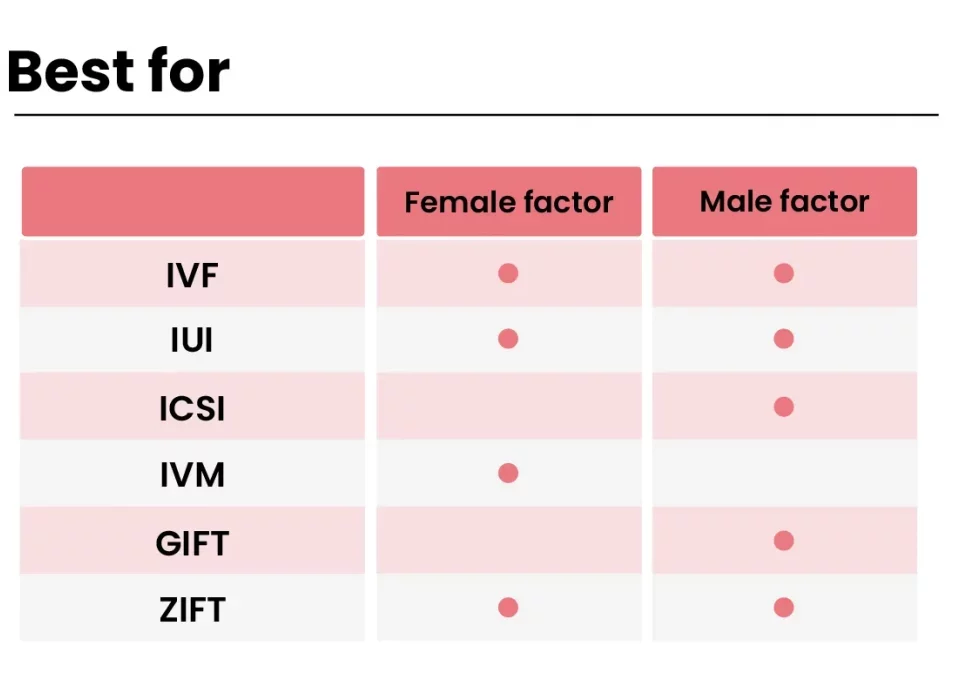
How Much Does IVF Cost? Your Complete Guide to Understanding In Vitro Fertilization Expenses
April 3, 2025
When Was IVF Invented? A Deep Dive into the History and Future of In Vitro Fertilization
April 4, 2025Can You Pick Gender with IVF? Everything You Need to Know

Can You Pick Gender with IVF? Everything You Need to Know
In vitro fertilization (IVF) has been a game-changer for millions of people dreaming of starting a family. It’s a process where eggs and sperm meet outside the body, creating embryos that can then be placed in the uterus. But beyond helping with infertility, IVF has sparked a big question: Can you actually choose your baby’s gender? The short answer is yes, you can—with the right tools and techniques. However, there’s so much more to this topic than a simple yes or no. From how it works to the ethical debates, costs, and even the latest trends, this article dives deep into everything you need to know about gender selection with IVF.
Whether you’re curious about the science, wondering about the practical steps, or just want to know what’s possible in 2025, you’re in the right place. Let’s explore this fascinating world together!
What Is Gender Selection with IVF, and How Does It Work?
Gender selection with IVF isn’t some futuristic sci-fi concept—it’s real, and it’s happening today. At its core, it’s about using advanced technology to figure out the sex of an embryo before it’s placed in the uterus. Here’s the basic rundown: during IVF, doctors create embryos by combining eggs and sperm in a lab. Then, with a technique called preimplantation genetic testing (PGT), they can check the embryos’ chromosomes to see if they’re XX (female) or XY (male). After that, you can pick which embryo to implant based on the gender you want.
But it’s not as simple as flipping a coin. The process involves a few key steps:
- Ovarian Stimulation: Medications help the ovaries produce multiple eggs.
- Egg Retrieval: Doctors collect the eggs in a quick procedure.
- Fertilization: Sperm meets egg in the lab to create embryos.
- PGT Testing: A few cells are taken from each embryo (usually around day 5) and analyzed.
- Embryo Transfer: The chosen embryo—male or female—is placed in the uterus.
This method is nearly 100% accurate for determining sex, according to studies from the American Society for Reproductive Medicine. Pretty cool, right? But it’s not just about picking a boy or girl for fun—there’s a lot more to consider.
Why Do People Choose Gender with IVF?
People turn to gender selection for all kinds of reasons, and it’s not always what you might think. Sure, some want a boy or girl to “balance” their family—like if they’ve got three boys and dream of a little girl in pigtails. But there’s more to it than that. Here are some of the big motivators:
- Medical Reasons: Some families use gender selection to avoid passing down genetic disorders tied to a specific sex. For example, conditions like hemophilia often affect boys more than girls because of how they’re linked to the X chromosome.
- Family Balancing: If you’ve got a house full of one gender, you might want to even things out. It’s a personal choice, and for some, it feels like completing their family puzzle.
- Cultural or Personal Preferences: In some cultures, having a boy or girl carries deep meaning. Maybe it’s about carrying on a family name or fulfilling a lifelong dream.
Take Sarah and Mike, a couple I heard about through a fertility clinic’s newsletter. They already had two daughters and wanted a son—not because they didn’t adore their girls, but because Mike grew up as an only boy and wanted that bond with a son. With IVF and PGT, they made it happen. Stories like theirs show how personal this decision can be.
But here’s a question for you: If you could pick, would you? Think about it—your answer might surprise you!
The Science Behind It: How Accurate Is Gender Selection?
Let’s get nerdy for a second. The magic happens with PGT, specifically a type called PGT-A (for aneuploidy, or chromosome abnormalities). When doctors test an embryo, they’re looking at its DNA. Girls have two X chromosomes (XX), and boys have an X and a Y (XY). The lab can spot this with almost perfect precision—think 99.9% accuracy, based on data from fertility journals like Fertility and Sterility.
Why so accurate? Because they’re not guessing—they’re literally reading the genetic code. A 2021 study of over 2,800 IVF patients found that every single case of gender selection via PGT matched the baby’s sex at birth. That’s a track record you can trust.
But here’s the catch: accuracy doesn’t guarantee success. IVF itself isn’t 100%—pregnancy rates depend on age, embryo quality, and other factors. So while you can pick the gender, there’s still a chance the embryo won’t implant. It’s a high-tech process with a human twist.
Is It Legal? Where Can You Do It?
Here’s where things get tricky. Whether you can pick your baby’s gender with IVF depends on where you live. In the United States, it’s totally legal—no federal laws ban it, and clinics offer it as an option. Places like California and New York are hotspots for fertility tourism because of their advanced clinics and relaxed rules.
But hop across the border to Canada, and it’s a no-go. Laws there forbid gender selection unless it’s for medical reasons. Same deal in the UK, Australia, and much of Europe. India and China? Strict bans, no exceptions. Why the difference? Some countries worry about gender imbalances—like too many boys being born—or ethical slippery slopes.
If you’re thinking about it, check your local laws. And if you’re in a spot where it’s not allowed, some families travel to places like the U.S. or Mexico. It’s a big decision, so research is your friend.
How Much Does It Cost to Pick Gender with IVF?
Let’s talk money—because this isn’t cheap. IVF alone can run you $12,000 to $15,000 per cycle in the U.S., according to the American Society for Reproductive Medicine. Add PGT for gender selection, and you’re tacking on another $2,000 to $4,000. That’s just the basics—medications, travel, and extra tests can push the total past $20,000.
Here’s a quick breakdown:
| Service | Cost Range |
|---|---|
| IVF Cycle | $12,000 – $15,000 |
| PGT (Gender Testing) | $2,000 – $4,000 |
| Medications | $3,000 – $5,000 |
| Embryo Freezing | $1,000 – $2,000 |
Some clinics, like CNY Fertility, offer lower rates—around $8,000 for IVF plus $2,000 for PGT. Insurance? It rarely covers gender selection unless it’s medically necessary, so most folks pay out of pocket. Saving up or exploring financing options might be your best bet.
The Ethical Debate: Should You Pick Your Baby’s Gender?
Okay, let’s get real—this topic stirs up some big feelings. On one side, people say it’s your body, your choice. If you can pick your baby’s gender, why not? It’s about freedom and building the family you want. Plus, if it prevents a serious illness, it’s a no-brainer.
On the flip side, critics argue it’s “playing God.” What if everyone starts picking boys, like in some countries where male babies are prized? A 2022 report from the National Institutes of Health warned that widespread gender selection could skew populations over time. And what about the embryos that don’t get chosen? Are we okay with discarding them?
Here’s a little poll to chew on:
What do you think?
- ✔️ It’s fine—parents should have the freedom to choose.
- ❌ Nope—it’s unnatural and could cause problems.
There’s no right answer, but it’s worth thinking about where you stand.
What Happens to the Other Embryos?
Speaking of those unchosen embryos, what happens to them? This is a question a lot of people don’t think about until they’re in the thick of it. After PGT, you might have a mix of male and female embryos, but you only transfer one or two. The rest have a few options:
- Freeze Them: Store them for later—maybe for another kid down the road. A baby was born in 2020 from an embryo frozen for 27 years!
- Donate Them: Give them to another family or to science for research.
- Discard Them: This one’s tough for some folks emotionally, but it’s an option.
It’s a personal call, and clinics will walk you through it. Sarah and Mike, from earlier, froze their extra embryos, hoping for a second child someday. What would you do?
Success Rates: Will It Work for You?
Gender selection is super accurate, but IVF success isn’t a sure thing. The odds of getting pregnant depend on a bunch of factors:
- Age: Under 35? You’ve got a 40-50% chance per cycle. Over 40? It drops to 10-20%.
- Embryo Quality: Healthy embryos are key—PGT helps here by weeding out issues.
- Clinic Expertise: Top clinics with experienced embryologists boost your odds.
A 2023 study in Human Reproduction found that IVF with PGT had a 45% live birth rate for women under 35. Not bad, but not guaranteed. If it doesn’t work the first time, you might need another cycle, which means more time and money.
New Trends in 2025: What’s Changing?
IVF tech is always evolving, and 2025 is no exception. Here’s what’s hot right now:
- AI in Embryo Selection: Some clinics use artificial intelligence to pick the healthiest embryos, not just for gender but for overall viability. Early data shows it could bump success rates by 5-10%.
- At-Home Monitoring: New kits let you track your hormone levels during IVF from home, cutting down on clinic visits.
- Social Media Buzz: Posts on X show folks are talking more about “family balancing” and sharing their IVF journeys—normalizing the convo.
These trends make the process smoother and more accessible, but they also raise new questions about cost and ethics.
3 Things You Haven’t Heard About Gender Selection
Most articles cover the basics, but here are three angles you won’t find everywhere:
1. The Emotional Rollercoaster
Picking a gender sounds straightforward, but it can mess with your head. What if you get attached to an embryo that doesn’t implant? Or feel guilty about the ones left behind? A 2024 survey of 500 IVF patients found 30% felt unexpected stress over gender choice. Clinics are starting to offer counseling to help, so don’t skip it.
2. Sperm Sorting: The Old-School Alternative
Before PGT, there was sperm sorting—separating X and Y sperm based on weight. It’s less accurate (70-80%) and cheaper, but some still use it with intrauterine insemination (IUI). It’s a low-tech option if full IVF feels overwhelming.
3. The Global Gender Gap Risk
If everyone picks boys, could we see a future with way more men than women? A 2023 UN report flagged this as a long-term worry in places with no regulations. It’s not an issue yet, but it’s a “what if” worth pondering.
How to Decide If It’s Right for You
So, should you go for it? It’s a big call, and there’s no one-size-fits-all answer. Here’s a checklist to help you figure it out:
- ✔️ Do you have a strong reason? Medical needs or a deep personal wish might tip the scales.
- ✔️ Can you afford it? Crunch the numbers—multiple cycles add up fast.
- ✔️ Are you okay with the ethics? Make sure it sits right with your values.
- ❌ Are you rushing in? Take time to research and talk it over with your partner or a doctor.
- ❌ Expecting perfection? IVF isn’t foolproof—be ready for ups and downs.
Talk to a fertility specialist—they’ll give you a personalized rundown based on your health and goals.
A Day in the Life: What to Expect During the Process
Wondering what it’s like to actually do this? Picture this: You’re a 32-year-old named Jamie, and you’ve decided to try IVF with gender selection. Here’s how it might go:
- Week 1: You start daily hormone shots to boost egg production. They sting a bit, but you get used to it.
- Week 2: Ultrasounds every few days to check your ovaries. You’re tired but excited.
- Egg Retrieval Day: A 20-minute procedure under sedation. You’re groggy after, but it’s quick.
- Waiting Game: Five days later, the lab calls—six embryos, three boys, three girls. You pick a girl.
- Transfer Day: A simple process, like a Pap smear. Then, two weeks of nail-biting until the pregnancy test.
Jamie’s story isn’t everyone’s, but it gives you a feel for the ride.
Busting Myths About Gender Selection
There’s a lot of noise out there—let’s clear it up:
- Myth: It’s only for rich people.
Truth: Costs are high, but financing and lower-cost clinics make it more doable. - Myth: It’s 100% guaranteed.
Truth: Gender picking is spot-on, but pregnancy isn’t. - Myth: It’s banned everywhere.
Truth: It’s legal in the U.S. and a few other spots—check your map.
Your Next Steps: How to Get Started
Ready to explore this for yourself? Here’s a game plan:
- Find a Clinic: Look for one with PGT experience—check reviews and success rates.
- Book a Consult: Ask about costs, timelines, and what they recommend for you.
- Get Educated: Read up on IVF basics and chat with others who’ve done it.
- Plan Your Budget: Save up or look into loans if needed.
Not sure where to start? Drop a question in the comments—I’ll point you in the right direction!
Final Thoughts: Is Gender Selection the Future?
Picking your baby’s gender with IVF is a mix of science, choice, and a little bit of wonder. It’s not for everyone, but for some, it’s a dream come true. As tech gets better and more people talk about it (check X for the latest chatter!), it’s only going to grow. Whether you’re all in or just curious, knowing the ins and outs helps you make a call that’s right for you.
What’s your take? Would you pick your baby’s gender if you could? Share your thoughts below—I’d love to hear!

